Hello Guys, Today we are going to discuss a very important topic for IIT jee Mains, Advance, NEET and AIIMS from Periodic table, its all about Electronegativity, their application and problems based on it.
Basically, electronegativity refers to how hard the nucleus of an atom pulls on electrons in its orbit. By “bonding pair of electrons,” that just means that in a chemical bond between two atoms, be it ionic or covalent, the bonding atom with greater electronegativity will pull the shared electrons closer to itself.
The fundamental reason behind this is that the positive nucleus attracts the negative electrons. The more positive charge in the nucleus, the greater the electronegativity. That’s only one part of the equation though.
The other depends on how many shells the atom has. The more shells, the farther away from the positive nucleus the outermost electrons will be, and thus the weaker the attraction.
A highly electronegative atom will have an ideal combination of large positive charge and few shells. That’s why in the periodic table, the most electronegative atoms are to the top right. Going to the right of the table = more positive charge, and going up = fewer shells.
Electronegativity is important cause the difference in electronegativity between two bonding atoms determines whether it is a covalent or ionic bonds. Covalent bonds have a small difference in electronegativity (less than 1.9), while ionic bonds have a large difference (greater than 1.9).
Other Details on the topic has been deal in details inside the lecture. Hope it will be extremely helpful for aspirants.
Thanks
Team IITian explains
———————————————————————————————————–
Watch our other videos.
Last video (Theoretical) on electronegativity
Electronegativity | Detail Concept and Tricks | Explained by IITian | Jee Mains, Advance | NEET
————————————————————————————————–
First Point of Difference Rule | Organic Chemistry | Explained by IITian | Jee Mains, Advance | NEET
—————————————————————————————————
Oxides of Phosphorus | Tricks and Techniques | IIT Jee Mains, Advance | BITSAT | NEET & AIIMS
—————————————————————————————————-
Phosphine Gas | Tricks and Techniques | IIT Jee Mains, Advance | BITSAT | NEET, AIIMS
—————————————————————————————————–
Potassium Permanganate | d Block Chemistry | Jee Mains, Advance | NEET | BITSAT and AIIMS
——————————————————————————————————
Neighbouring Group Participation | Tricks and Tech | IIT-Jee Mains, Advance | BITSAT | NEET & AIIMS
——————————————————————————————————–
Carbocations and Carbanions | General Organic Chemistry | Explained by IITian | Jee Mains & Advance
———————————————————————————————————-
Tricks for Qualitative Analysis | Cations | Jee Mains, Advance, NEET, BITSAT and AIIMS
———————————————————————————————————–
Tricks to Remember p Block Reactions | Group 15 | Jee Mains, Advance, NEET, BITSAT & AIIMS
———————————————————————————————————–
Trick for Bond Angle | Developed by IITian | IIT Jee Mains, Advance, NEET, BITSAT & AIIMS
———————————————————————————————————–
Banana Bond in Chemistry | Explained by IITian | IIT Jee Mains, Advance, BITSAT, NEET and AIIMS
source











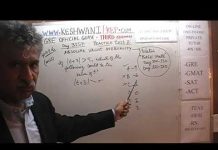

![CY_GATE_2019_PHYSICAL_SPECTROSCOPY_[ELECTRONIC_BASIC]_All IN ONE_[Short_Trick]_2018-19_PART_1ST - Videos](https://trends.edugorilla.com/wp-content/uploads/sites/8/2018/08/cy_gate_2019_physical_spectroscopy_electronic_basic_all-in-one_short_trick_2018-19_part_1st-218x150.jpg)



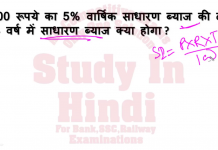


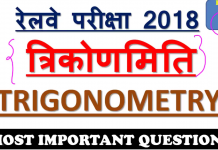
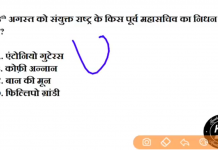
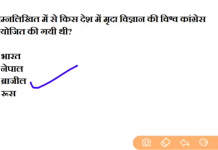
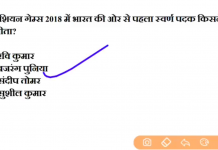





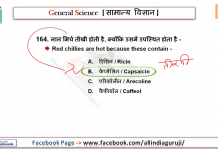


![24 August 2018 – The Indian Express Newspaper Analysis हिंदी में – [UPSC/SSC/IBPS] Current affairs - Videos](https://trends.edugorilla.com/wp-content/uploads/sites/8/2018/08/a520-218x150.png)
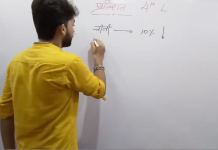



YOU ARE FROM WHICH BRANCH AT IIT KHARAGPUR ?
sir complete syllabus fastly
Pls make more video on inorganic pls..
Sir inorganic mechanism part 2 plsssssssssss
Sir pls Built our basics first.
Ppssss
Sir do we need to remember the electronegativities of atoms??
Thank you sir
Please increase lecture duration
Concept west
Thanx for your hard work sir
Thanks sir , please next vedio jldi layiyega
Sir pauling walaaa mei
0.12 hota 0.208 nhi
Correct me if i m wrong
The best teacher of chemistry 👌👌👌
Thank you Sir! Take care.
according to slatter rule we take 1 electron as test charge so net shielding effect of Si is 3*.35+8*.85+2*1=9.85 so net Zeff=4.15(in last question of video)
Sir if possible make video on stoichiometry plzplz
Sir can u tell me which book is best for both jee mains and advance.
Physical chemistry
Organic chemistry
Inorganic chemistry.
Could you please upload a video of HSAB principle
EXCELLENT vedio
Sir please make vedio on IUPAC naming of coordination complex
Sir physics ki koi video nahi h
BRO ORGANIC AUR INORGANIC PURA COVER KARA DO BHAI YAHA BAHUT LOG TUMHARA WAIT KAR RAHE HAI.. GREAT
Sir reaction mechanism part 2 notification came but the video is not there in your channel………
Please look out for this ……….
For this reason i commented on this video……
Sir assignments??
Sir thanks a lot.Great respect for you sir from Kashmir